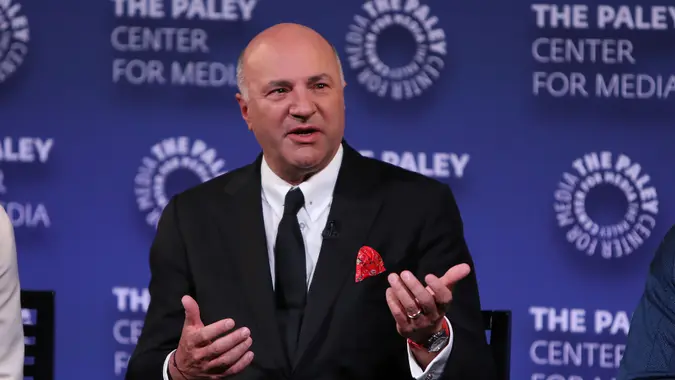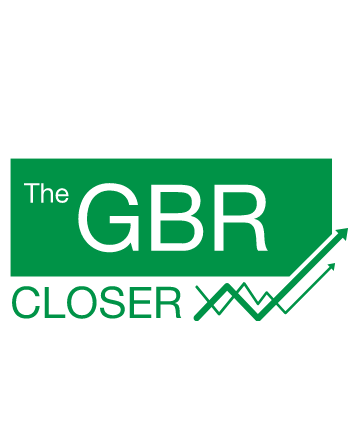How Does a 401(k) Loan Work? How To Borrow From Your Retirement

Commitment to Our Readers
GOBankingRates' editorial team is committed to bringing you unbiased reviews and information. We use data-driven methodologies to evaluate financial products and services - our reviews and ratings are not influenced by advertisers. You can read more about our editorial guidelines and our products and services review methodology.

20 Years
Helping You Live Richer

Reviewed
by Experts

Trusted by
Millions of Readers
Typically, the IRS prevents you from cashing out your 401(k) until you reach the age of 59½ years old. How they do this is by sticking a 10% penalty on early 401(k) withdrawals, and that’s on top of income taxes. However, most (but not all) 401(k) plans allow borrowing from a 401(k) by taking out loans under the Internal Revenue Service’s 401(k) loan rules.
A 401(k) loan doesn’t require a credit check, and the interest rate is the same regardless of your credit score. Keep reading to find out how a 401(k) loan works, when it may be a good idea to use one and when you should avoid 401(k) loans.
How Does a 401(k) Loan Work?
When you borrow money from a 401(k), investments in your 401(k) account are sold so cash can be distributed to you upfront. The IRS says you can borrow 50% of your vested account balance or $50,000, whichever is less.
401(k) Loan Repayment
Typically, 401(k) loans are repaid over five years with equal payments. It’s possible to take longer to repay the loan if you borrowed the money to purchase a primary residence. These repayments are usually made through paycheck deductions, which are then redeposited in your 401(k) account.
401(k) Loan Interest
The interest on your 401(k) loan is generally the current prime rate — as of this writing, it’s 7.50% — plus 1%-2%. However, it can be different depending on where you are borrowing from.
The bright side is that the interest you’re paying gets added back to your 401(k) account. However, you’re missing out on the returns you could have been earning had the money been invested.
401(k) Loan Fees
On top of interest, expect to pay origination fees ($50-$100) and maintenance fees ($25-$50)
Pros and Cons of Taking Out a 401(k) Loan
There are several things to consider before you take out a 401(k) loan:
| 401(k) Loan Pros | 401(k) Loan Cons |
|---|---|
| Often come at a lower interest rate than personal loans | Slow your retirement savings |
| Don’t need a credit check | You have to pay taxes as you’re paying the loan back |
| Can’t quit or lose your job |
Pros:
- 401(k) loans often come at a lower interest rate than personal loans. Personal loan interest rates can go up to 20% based on your creditworthiness.
- You don’t need a credit check. Your credit won’t get a hard pull.
Cons:
- Slowing your retirement savings. For however long it takes you to pay the loan back, you aren’t building your retirement account. This might affect your long term financial goals.
- Taxes. A traditional 401(k) allows you to save money and not pay taxes on it until you retire. However, if you take a loan, you will have to pay taxes as you’re paying it back and when you retire.
- You must be employed. If you lose or quit your job, the amount of money you haven’t paid back will be considered an early withdrawal and you’ll be penalized 10% (on top of income taxes).
401(k) Loan vs. Hardship Withdrawal: Which Is Better?
Before you take out a 401(k) loan, consider a hardship withdrawal. The IRS lets you take money out for financial hardship. However, you can only take out the exact amount that you need. These are the reasons the IRS will allow a hardship withdrawal:
- Medical expenses for yourself, your spouse or a dependent
- The down payment of a home
- Tuition or related post-secondary educational expenses for yourself, your spouse or a dependent
- Rent or mortgage payments to prevent eviction or foreclosure on your principal residence
- Funeral expenses for yourself, your spouse or a dependent
- Some repair to your principal residence
However, you can’t pay this money back like you can with a 401(k) loan — so you’ll essentially be sacrificing whatever amount you take from your retirement fund. It is also important to consider that not all of these situations are exempt from an early withdrawal penalty, and in all cases you’ll be paying income taxes on the withdrawal.
What Happens If You Default on a 401(k) Loan?
In a worst-case scenario, if you default on your 401(k) loan, the remaining balance is treated similarly to cashing out your 401(k). Your plan might allow for a short grace period if you miss a payment — the IRS allows plans to provide that a loan doesn’t become a deemed distribution until the end of the quarter following the quarter in which the payment was missed.
If you leave your job, even if you’re let go through no fault of your own, you typically have 60 days to repay any remaining balance, or the remainder is treated as a distribution. Your plan might include language that allows your repayments to be suspended if you’re performing military service or if you’re taking a leave of absence for up to one year.
Like a 401(k) cash-out, the remaining balance is treated as a distribution from your account, making it subject to income taxes and potentially an early 401(k) withdrawal penalty — even though you might have already spent all the money. Even if you can afford to roll the money over within 60 days, the distribution isn’t eligible to be added back to another retirement plan.
How To Decide If a 401(k) Loan Is Right for You
A 401(k) loan can provide you with the necessary cash at a reasonable interest rate, in certain circumstances, regardless of your credit history. But remember that you are using your retirement savings: Even if you have the best intentions about repaying your 401(k) loan, you’re still tapping your nest egg.
Keep in mind that you must pay the money back almost immediately if something goes wrong and you leave or lose your job. You could be hurting your golden years in addition to making yourself subject to extra taxes and penalties should you fail to pay the 401(k) loan back in time.
FAQ
- What is the interest rate on a 401(k) loan?
- The interest on your loan is generally the current prime rate (as of this writing, it’s 7.50%) plus 1%-2%. However, it can be different depending on where you are borrowing from.
- How long do you have to pay back a 401(k) loan?
- You generally have about five years to pay back the loan, unless you used the loan to buy a primary residence.
- Can you borrow from your 401(k) if you’re self-employed?
- Yes, if your solo 401(k) provider allows you to borrow from your plan.
- What happens if I leave my job while I have a 401(k) loan?
- The money you haven’t paid back will be considered an early withdrawal and you will be charged a 10% penalty.
- Can I take out a 401(k) loan to pay off credit card debt?
- Yes, but it is only worth it if your 401(k) loan comes with better interest than your credit cards.
- Can you take out multiple 401(k) loans
- You can take out multiple loans as long as the total of all of your loans doesn’t go over the IRS limit of 50% of your vested balance or $50,000 -- whichever is less.
Our in-house research team and on-site financial experts work together to create content that’s accurate, impartial, and up to date. We fact-check every single statistic, quote and fact using trusted primary resources to make sure the information we provide is correct. You can learn more about GOBankingRates’ processes and standards in our editorial policy.
 Written by
Written by  Edited by
Edited by 

























